1. Infrastructure
1.1. Network Project
1.1.1. Phase I
1.1.1.1. Installation
1.1.1.1.1. Singapore
1.1.1.1.2. Bangalore
1.1.1.1.3. Delhi/Noida
1.1.1.2. Connection
1.1.1.2.1. Singapore
1.1.1.2.2. Bangalore
1.1.1.2.3. Delhi/Noida
1.1.1.3. Configuration and Tuning
1.1.2. Phase II
1.1.2.1. Mumbai
1.1.2.2. Bangkok
1.1.3. Phase III
1.1.3.1. Kolkata
1.1.3.2. Pune
1.1.3.3. Chennai
1.1.3.4. Hyderabad
1.1.3.5. Sydney
1.2. Google Apps
1.2.1. Email
1.2.1.1. Testing
1.2.1.2. Migration
1.2.1.3. Decommissioning
1.2.2. Docs
1.2.3. Groups
1.2.3.1. Blink
1.2.3.1.1. Location
1.2.3.1.2. Business Unit
1.2.3.1.3. Profession
1.2.3.1.4. Interests
1.2.3.2. Space Matrix
1.2.3.2.1. Location
1.2.3.2.2. Business Unit
1.2.3.2.3. Profession
1.2.3.2.4. Interests
1.2.3.3. Leap
1.2.3.4. QSigma
1.2.4. Sites
1.2.4.1. Connect
1.2.4.2. Project Extranet
1.3. Workstation / Laptops
1.3.1. Quarterly Acquisition
1.3.2. HP Standards
1.3.3. Apple Standards
1.4. Data Management
1.4.1. Centralization
1.4.1.1. Bangalore
1.4.1.1.1. Hyderabad
1.4.1.1.2. Chennai
1.4.1.1.3. Pune
1.4.1.1.4. Mumbai
1.4.1.2. Singapore
1.4.1.2.1. Sydney
1.4.1.2.2. Bangkok
1.4.1.3. Noida
1.4.1.3.1. Kolkata
1.4.1.3.2. New Delhi
1.4.1.4. Sydney
1.4.2. Backup
1.4.2.1. Noida
1.4.2.2. Singapore
1.4.2.3. Bangalore
1.4.3. Google Apps
2. Digital Design
2.1. BIM Implementation
2.1.1. Project 1
2.1.2. Project 2
2.2. Toolkit
2.2.1. Autodesk
2.2.1.1. APAC RNUL
2.2.1.1.1. VPA
2.2.1.1.2. License Server
2.2.1.1.3. ARA (40)
2.2.1.1.4. 3ds max (10)
2.2.1.1.5. Subscription (50)
2.2.1.2. AutoCAD LT
2.2.1.2.1. India (150)
2.2.1.2.2. Singapore (50)
2.2.1.3. India NUL
2.2.1.3.1. VPA
2.2.1.3.2. License Server
2.2.1.3.3. ARA (30)
2.2.1.3.4. Subscription (30)
2.2.1.4. AutoCAD WS
2.2.2. Adobe
2.2.2.1. Photoshop
2.2.2.2. Illustrator
2.2.2.3. InDesign
2.2.2.4. Acrobat
2.2.3. Dassault
2.2.3.1. DraftSight
2.3. New node
3. Knowledge
3.1. Connect
3.1.1. Google Site
3.1.2. Final Site
3.2. Public Websites
3.2.1. Space Matrix
3.2.1.1. Rev 1
3.2.1.1.1. New Landing Page
3.2.1.1.2. Rev Home Page
3.2.2. Blink
3.2.2.1. Temporary
3.2.2.2. New Site
3.3. Training & Education
3.3.1. 101
3.3.1.1. Office Applications
3.3.1.2. AutoCAD Basics
3.3.1.3. Design Processes
3.3.1.4. BIM
3.3.1.5. Project Management
3.3.1.6. Brand
3.3.1.7. Email Communications
3.3.1.8. Rendering and Visualization
3.3.2. 201
3.3.3. 301
3.3.4. 401
4. Development
4.1. Sugar CRM
4.1.1. Phase I
4.1.1.1. Implementation
4.1.1.2. BD Process
4.1.1.3. Overview Reports
4.1.2. Phase II
4.1.2.1. Upgrade 6.2
4.1.2.2. Mobile Client
4.1.3. Phase III
4.1.3.1. Reporting
4.1.3.2. Financial Integration
4.1.3.3. Contract Management
4.2. Financial Accounting
4.2.1. Software Selection
4.2.1.1. SAP B1
4.2.1.2. FACT
4.2.1.3. NetSuite
4.2.2. Agreement Negotiation
4.2.3. Installation and Configuration
4.2.4. Data Migration
4.2.5. Data Verification and Audit
4.2.6. GO LIVE
4.2.7. Member Training
4.3. HR
4.3.1. R1.16
4.3.2. R1.17
4.3.3. R1.18
4.3.4. R1.19
4.3.5. R.1.20
4.3.6. R1.21
4.3.7. R1.22
4.3.8. R1.23
4.3.9. R1.124
4.4. Project Management
4.4.1. Resource Management
4.4.1.1. Time & Expense
4.4.1.1.1. Timesheet
4.4.1.1.2. Expenses
4.4.1.2. Resource Planning
4.4.1.3. Resource Productivity
4.4.2. Project Management
4.4.2.1. Project Directory
4.4.2.1.1. Project Information
4.4.2.2. Project Reports
4.4.2.2.1. Project Profitability
4.4.2.2.2. Project Financial
4.4.2.3. Project Process
4.4.3. Document Management
4.4.3.1. Platform Architecture
4.4.3.1.1. Windows OS
4.4.3.1.2. Linux OS
4.4.3.1.3. Mac OS
4.4.3.2. Specification
4.4.3.3. Planning and Configuration
4.4.3.4. Interface
4.4.3.4.1. Client OS
